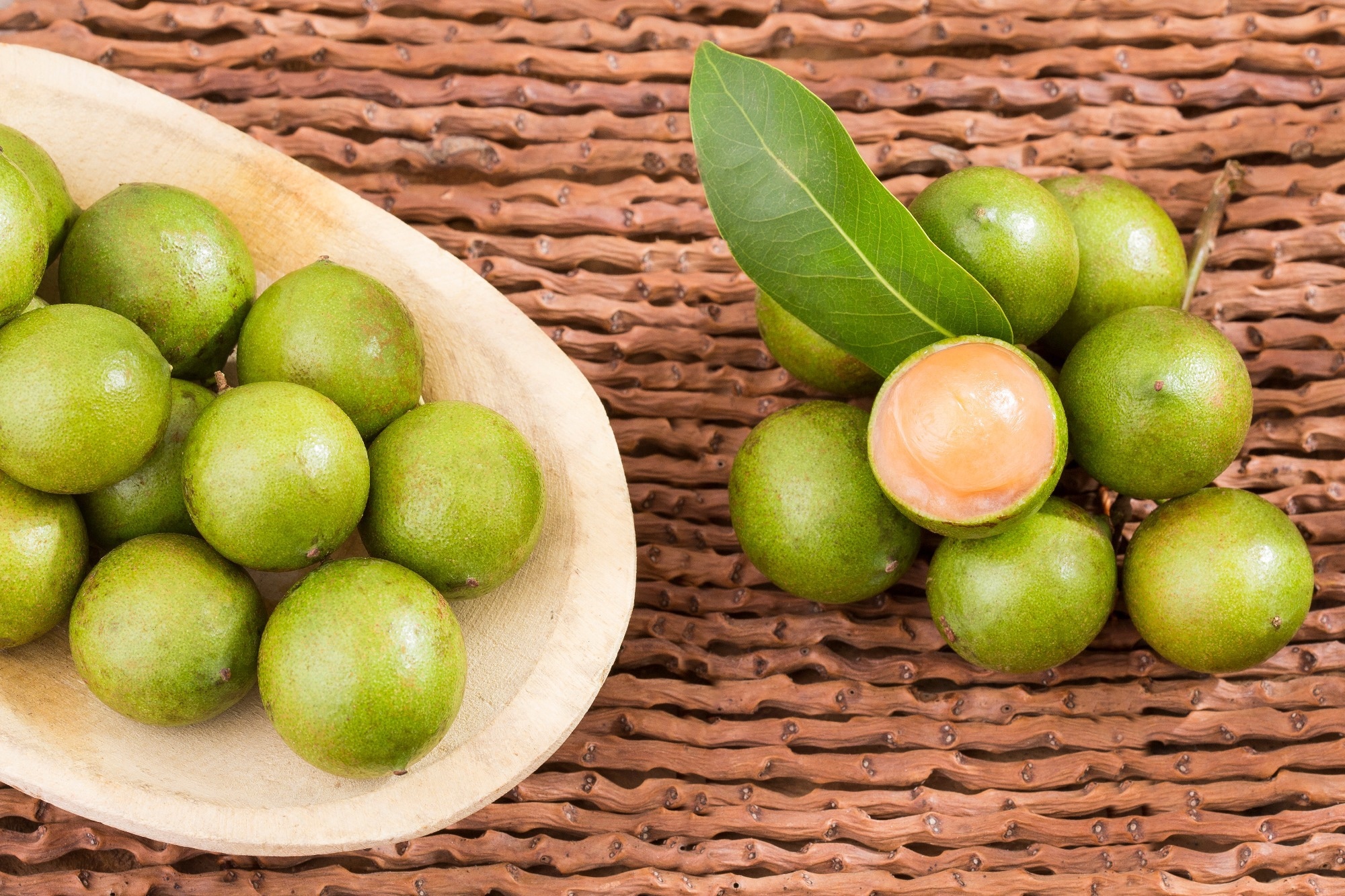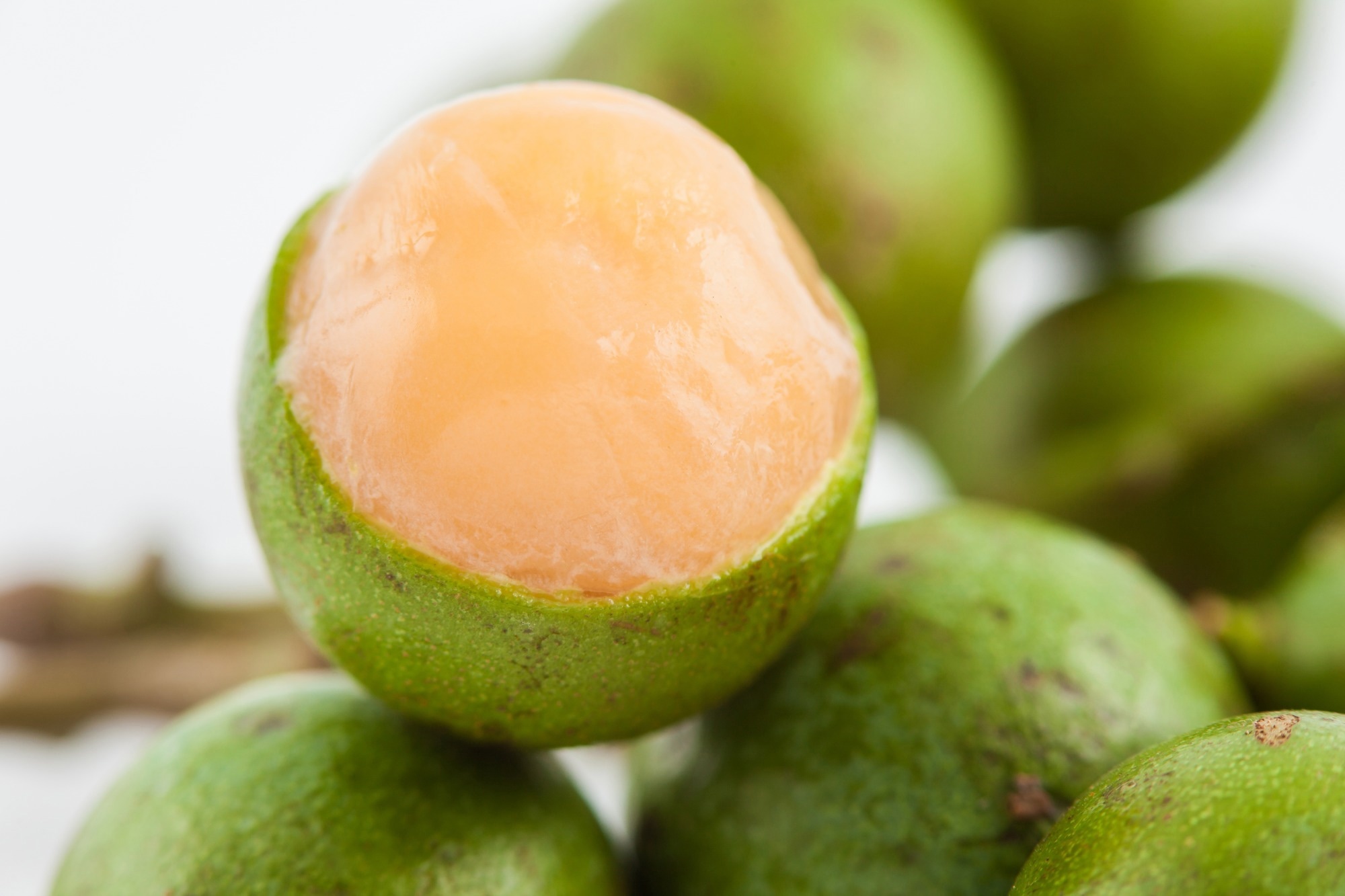Introduction
Botanical profile and phytochemical composition
Nutritional properties
Potential medicinal and pharmacological effects
Safety profile and considerations
Research gaps and future directions
Conclusion
References
Further reading
Melicoccus bijugatus, also known as Spanish lime, is a tropical fruit valued for its cultural, nutritional, and medicinal potential. Its seed and peel contain potent bioactive compounds with cardioprotective, antioxidant, and antimicrobial effects.
 Image Credit: Luis Echeverri Urrea / Shutterstock.com
Image Credit: Luis Echeverri Urrea / Shutterstock.com
Introduction
Melicoccus bijugatus is a fruit-bearing tree of the Sapindaceae (soapberry) family, a close relative of horse chestnut, maples, ackee, and lychee. More commonly referred to as ‘mamoncillo,’ ‘quenepa,’ or ‘Spanish lime,’ this fruit is widely consumed throughout the American tropics, especially during its June–September ripening season.1,2
To date, M. bijugatus has received limited scientific attention as compared to its commercially prominent relatives like lychee and rambutan.3 Nevertheless, emerging evidence suggests that M. bijugatus may contain several physiologically beneficial phytochemicals that may provide the foundation for nutraceutical development in the future.
Botanical profile and phytochemical composition
M. bijugatus is a slow-growing, dioecious evergreen tree that can reach up to 85 ft (26 m) in optimal conditions. Leaves are alternate and compound with four opposite, elliptic leaflets, and trees typically develop a round or oval canopy.
Anthropogenically valuable parts of the plant include its fruit, a round drupe with a thin, leathery green peel enclosing a salmon-colored or yellowish, translucent, gelatinous pulp aril that adheres tightly to a large seed (occasionally two seeds), and the pulp itself, which is the primary edible portion of this fruit.4
The species is native to Colombia, Venezuela, the island of Margarita, French Guiana, Guyana, and Surinam, and is widely cultivated throughout the Caribbean and parts of Central and North America; several named cultivars differ in sweetness, pulp yield, and seed adherence.
Spanish lime pulp is chemically dominated by phenolic acids, including coumaric, ferulic, and caffeic acid or their derivatives, as well as simple sugars like sucrose, glucose, and fructose, which impart the pulp's characteristic flavor. The pulp also contains vitamin C and resveratrol derivatives; however, its flavonoid content is relatively low compared to the peel and seed.3
The Spanish lime seed is rich in flavonoids, with the embryo exhibiting particularly high concentrations of flavan-3-ols like epicatechin and catechin, as well as B-type procyanidins. The seed coat contains even higher concentrations of procyanidins, including unique A-type structures not found in other parts of the fruit.3
The peel is rich in total polyphenols and flavonoids, with some analyses reporting that its total phenolic content exceeds that of the edible pulp.5 This tissue-specific phytochemical partitioning is critical, as the most potent bioactive compounds linked to traditional medicinal applications are concentrated in the seed and peel, which are often considered agricultural waste.3
Nutritional properties
Different components of the Spanish lime vary widely in their nutritional properties. The edible pulp provides approximately 58-73 kcal, 13.5-19.2 g of carbohydrates, about 0.8–1.0 g of protein, and 0.1–0.3 g of fat/100g.2,6 Spanish limes represent a considerable source of dietary fiber, as well as vitamins C and provitamin A carotenoids.1,2
Recent nutrition research identifies the mineral content of Spanish limes as their most distinguishing nutritional feature. More specifically, a 100-gram serving of Spanish lime contains between 9.8–23.9 mg of phosphorus and 0.47–1.19 mg of iron, which is significantly higher than mineral concentrations from other tropical fruits.2,7
Beyond fresh consumption, the pulp is also processed into juices and preserves in some regions; however, the overall edible yield is relatively low because the large seed occupies much of the fruit volume.
Potential medicinal and pharmacological effects
The roasted and pulverized M. bijugatus seed is widely used as a potent astringent to treat diarrhea. This practice is now scientifically supported by the known antimicrobial and fluid-transport-modulating properties of flavan-3-ols like epicatechin, catechin, and procyanidins present in this seed.3
Spanish lime pulp is traditionally used to manage hypertension and asthma.3 Using rat models of myocardial injury, consumption of M. bijugatus pulp extract reduced heart rate and blood pressure levels, in addition to normalizing electrocardiogram (ECG) abnormalities associated with cardiac damage.8
These effects are attributed to the rich diversity of phenolic compounds present in Spanish lime pulp. Whereas caffeic acid inhibits vascular smooth muscle cell proliferation, coumaric acid has previously demonstrated antioxidant properties.3
M. bijugatus fruit and leaf extracts exhibit inhibitory effects against various foodborne bacteria and fungi, thereby providing a scientific basis for the traditional use of seeds for treating gastrointestinal infections. The seed kernel is white, crisp, and starchy when raw and is more palatable after roasting, which aligns with traditional culinary uses.9
 Image Credit: Anamaria Mejia / Shutterstock.com
Image Credit: Anamaria Mejia / Shutterstock.com
Safety profile and considerations
When large quantities of Spanish limes are consumed, the most commonly reported adverse effect is mild throat irritation attributed to the astringency of certain polyphenols.3 The large and slippery seed may also pose a choking hazard, especially for children.
Many plants in the Sapindaceae family contain potentially toxic compounds like cyanogenic glycosides or saponins. However, there is currently no direct scientific evidence confirming their presence in M. bijugatus seeds.3
Raw seeds are not directly consumed, with traditional practices only consuming roasted or cooked seeds. These methods may reduce toxicity and improve digestibility; however, additional toxicological studies are needed to confirm the safety of seed extracts. Reports of toxicity from the fruit are scarce, and most risks are mechanical or related to excessive intake of astringent seeds.3
Research gaps and future directions
Preclinical studies have consistently reported cardioprotective effects associated with M. bijugatus. Nevertheless, these findings must be validated in human clinical trials to determine efficacy and establish safe dosages. At present, there are no published randomized controlled trials in humans evaluating these effects.8
A key limitation to conducting these studies is that establishing a standardized extract is a prerequisite for reliable clinical research.
Furthermore, the bioavailability of polyphenols from complex food matrices is often low, which confounds proxies of biomolecule absorption and dose standardization. Additionally, varietal differences in pulp chemistry and seed–pulp adherence may complicate standardization efforts.10
Conclusions
M. bijugatus, a culturally important tropical fruit with a modest nutritional profile, is a potent source of complex phytochemical bioactives with cardioprotective, antioxidant, and antimicrobial effects.
The high concentrations of flavonoids from the seed and peel of M. bijugatus present a clear opportunity for creating value-added nutraceuticals or functional foods in the future.
Its broad cultivation across the Caribbean and northern South America, along with locally adapted cultivars, underscores potential for targeted agricultural and health applications.1
References
- Javain, E., Wilson, J., & Badrie, N. (2019). Melicoccus Bijugatus (guinep): Phytochemical, properties, associated health benefits and commercial applications. International Journal of Fruit Science, 20(sup2), S659-S666. DOI:10.1080/15538362.2019.1669517, https://www.tandfonline.com/doi/full/10.1080/15538362.2019.1669517
- Morton, J. F. (1987). Mamoncillo. In Fruits of warm climates (pp. 267–269). Julia F. Morton. https://www.growables.org/information/TropicalFruit/MamoncilloMorton.htm. Accessed on 01 August 2025.
- Bystrom, L. M. (2012). The potential health effects of Melicoccus bijugatus Jacq. fruits: Phytochemical, chemotaxonomic and ethnobotanical investigations. Fitoterapia, 83(2), 266–271. DOI:10.1016/j.fitote.2011.11.018, https://www.sciencedirect.com/science/article/abs/pii/S0367326X11002942?via%3Dihub
- Crane, J. H., & Balerdi, C. F. (2023). Mamoncillo (Spanish Lime) Growing in the Florida Home Landscape. UF/IFAS Extension. https://edis.ifas.ufl.edu/publication/HS310. Accessed on 01 August 2025.
- Carmona-Hernandez, J. C., Gonzalez-Correa, C. H., & Fausto-Gonzalez, C. J. (2025). Antioxidant Potential of Polyphenols from Colombian Melicoccus Bijugatus fruit. International Journal of Innovative Research and Scientific Studies, 8(2), 769–776. DOI:10.53894/ijirss.v8i2.5321, http://www.ijirss.com/index.php/ijirss/article/view/5321
- Francis, J. K. (1992). Melicoccus bijugatus Jacq. Quenepa. USDA Forest Service, Southern Forest Experiment Station. https://data.fs.usda.gov/research/pubs/iitf/sm_iitf048%20%20(4).pdf. Accessed on 01 August 2025.
- Leterme, P., Buldgen, A., Estrada, F., & Londoño, A. M. (2006). Mineral content of tropical fruits and unconventional foods of the Andes and the rain forest of Colombia. Food Chemistry, 95(4), 644–652. DOI:10.1016/j.foodchem.2005.02.003, https://www.sciencedirect.com/science/article/abs/pii/S030881460500138X?via%3Dihub
- Nwokocha, C., Warren, I., Palacios, J., et al. (2019). Modulatory Effect of Guinep (Melicoccus bijugatus Jacq) Fruit Pulp Extract on Isoproterenol-Induced Myocardial Damage in Rats. Identification of Major Metabolites Using High-Resolution UHPLC Q-Orbitrap Mass Spectrometry. Molecules, 24(2), 235. DOI:10.3390/molecules24020235. https://www.mdpi.com/1420-3049/24/2/235
- Juárez‐Méndez, M. E., Lozano‐Navarro, J. I., Velasco‐Santos, C., et al. (2021). Effect of the Melicoccus bijugatus leaf and fruit extracts and acidic solvents on the antimicrobial properties of chitosan–starch films. Journal of Applied Microbiology, 131(3), 1162–1176. DOI:10.1111/jam.15025, https://academic.oup.com/jambio/article-abstract/131/3/1162/6715793?redirectedFrom=fulltext&login=false
- Gonçalves Santana, M., Freitas-Silva, O., Mariutti, L. R. B., & Teodoro, A. J. (2022). A review of in vitro methods to evaluate the bioaccessibility of phenolic compounds in tropical fruits. Critical Reviews in Food Science and Nutrition, 64(6), 1780–1790. DOI:10.1080/10408398.2022.2119203, https://www.tandfonline.com/doi/full/10.1080/10408398.2022.2119203
Further Reading
Last Updated: Aug 8, 2025